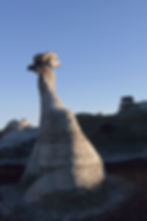top of page
CARD SETS
Sets of four cards (4¼ x 5½ inches).
Glossy finish, blank inside.
Includes four white envelopes.
set of 4 different cards = $15
New Mexico Landscape: FOUR-CARD SET
One of each design is shown: two from my Bisti Wilderness and two from my White Sands series.
CARD SETS
Sets of four cards (4¼ x 5½ inches).
Glossy finish, blank inside.
Includes four white envelopes.
set of 4 different cards = $15
New Mexico Landscape: FOUR-CARD SET
One of each design is shown: two from my Bisti Wilderness and two from my White Sands series.
40 years on 4 continents
Bisti Wilderness, NM
Many of the images in this gallery are featured in my photo book,
Hoodoo Badlands: New Mexico's Chaco Wash Landscape—the Bisti and Beyond,
which also contains explanatory essays.
To order prints, go to Shop/Contact.

Bisti Wilderness 2015 #17

Bisti Wilderness 2016 #455

Bisti Wilderness 2015 #27

Bisti Wilderness 2016 #357

Bisti Wilderness 2016 #393

Bisti Wilderness 2015 #124

Bisti Wilderness 2016 #319

Bisti Wilderness 2016 #342

Bisti Wilderness 2015 #148

Bisti Wilderness 2015 #11

Bisti Wilderness 2015 #147

Bisti Wilderness 2016 #90

Bisti Wilderness 2016 #119

Bisti Wilderness 2016 #71

Bisti Wilderness 2016 #55

Bisti Wilderness 2016 #36

Bisti Wilderness 2015 #84

Bisti Wilderness 2015 #170

Bisti Wilderness 2016 #100

Bisti Wilderness 2015 #102

Bisti Wilderness 2016 #23
STUART GELZER photography
bottom of page